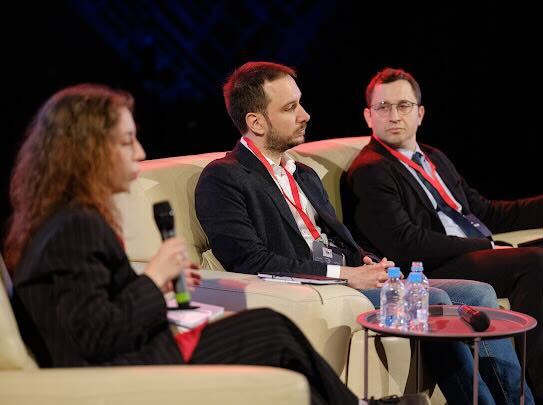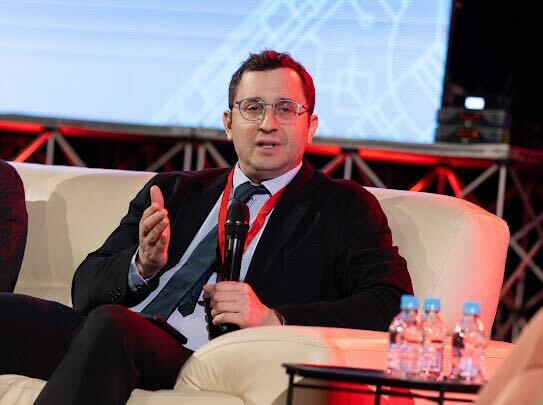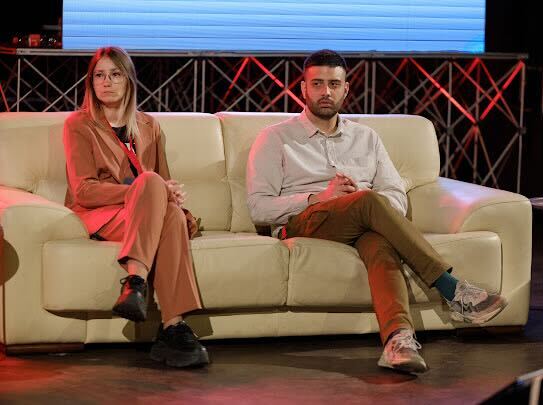Protests in Serbia – Past, Present and Future
The hot topic across all the Western Balkans is the current protests in Serbia. One of the key sessions from day two on Point 13 conference was about an important and inspirative sign of civil disobedience shaped in protests in Serbia.

The panelists on the session named “Protests in Serbia – Past, Present and Future” were Milica Kostin, a prominent activist and political science student at University in Belgrade, Nikola Burazer, an Executive Editor at European Western Balkans, Ivan Subotić, an editor at Fake News Tragač Jelena Vasić, a project manager and one of the founders of Serbian investigative portal KRIK and Filip Ejdus, an Associate Professor in International Security at the University of Belgrade. The moderator of this session was Marija Ćosić from CA “Why not”.
The session began with Milica Kostin, an activist and student from the University of Belgrade, who explained the origin of the protests: the collapse of a canopy at a railway station on November 1st of 2024, which led to an escalating blockade of universities across Serbia.
“We started with 15 minutes of silence at 11:52 — the exact time of the collapse. After that, we had another victim of the canopy collapse, then it changed to 16 minutes of silence,” she explained.

Blockades spread rapidly from the Faculty of Dramatic Arts to other major institutions, including universities in Niš, Novi Sad, Kragujevac and Novi Pazar. These actions culminated in nationwide protests such as the 15 for 15 march on March 15th, which drew massive public attention due to the scale of this protest, but also the use of illegal sound weapons.
Filip Ejdus, Head of the Center for International Security, dissected how the Serbian regime manipulated the protests into a colored revolution narrative. President Aleksandar Vučić, supported by disinformation from Chinese and Russian officials, claimed foreign interference from Western intelligence and NGOs.
“This was a borrowed narrative from Russia,” Ejdus asserted, “used to delegitimize a genuine grassroots movement”.

These fabrications led to harassment of activists and baseless accusations against participants, encouraging a climate in which opposing views were often perceived as disloyal and where students and other citizens were portrayed as enemies of the progress of their own country.
The regime’s propaganda machine fabricated evidence, labeling student activists as foreign agents and suggesting ties to Croatia, the CIA, and NGOs. Even students attending international conferences were accused of being trained for subversion.
As moderator Marija emphasized, in a one live program of a Serbian tabloid Informer, participants of the Point 13 conference were targeted as one who attends extremist training that directly harms the security of Serbia.
Nikola Burazer, editor at European Western Balkans, criticized the European Union’s prolonged silence.
The European Union initially responded to the protests with general calls for dialogue and a constructive approach, encouraging engagement with all stakeholders and discussions about the ongoing crisis. However, this stance was met with frustration in Serbia, where many questioned the possibility of meaningful dialogue with a government. Panelists noted that it took some time for the EU to fully grasp the values driving the protests and to openly express support for them.
Burazer added that the key event for EU officials was action led by students who cycled to Strasbourg and marched to Brussels where EU rhetoric began to shift.
“They started to recognize the student cause as aligned with EU values of democracy and rule of law,” Burazer stated.
Jelena Vasić, a journalist from KRIK, classified the extent of the crackdown. From vigilante attacks on students to the use of sonic weapons, she described a regime intent on using violence, intimidation, and smear campaigns. The regime’s tolerance — even celebration — of such violence was there from the beginning.
“They turned peaceful protesters into state enemies,” she said.
She, as well, explained some incidents where ruling party members physically assaulted students, or where government-friendly media labeled them as foreign mercenaries.
Vasić also explained the positive side of the protests. The students have created a wave of reactions. The most important thing is that citizens, inspired by the students, become active and involved in social processes, pointing out the obvious corruption that took place in the country.

Ivan Subotić, editor of Fake News Tragač, tracked disinformation across regime-aligned tabloids.
“They labeled protests as traffic obstructions or foreign plots, leaving out that those attacking students were ruling party members,” he explained.
Narratives of CIA-backed revolts and fabricated EU support eroded public trust in democratic institutions while trying to fracture the movement’s credibility. Subotić’s team tracked dozens of persistent disinformation campaigns. He also stated that more than 300 fake news or stories were archived by the Tragač archive about ongoing protests in Serbia.
By May 2025, students transitioned from calls for accountability (list of demands) to demanding free and fair elections. Kostin explained that students want answers on whether it’s the institutions themselves or those leading them that are the problem for the current situation in Serbia. Despite some minor concessions, like brief education reforms, most demands remain unmet.
Ejdus observed that although a transitional government was initially proposed, fair elections have become the united demand. He warned, however, that the regime’s tactic is delaying. That means they want to wait for the students to exhaust themselves, divide them from professors, and reassert control. Unlike past short-lived movements, he pointed out that this one built lasting social capital through democratic student assemblies and consensus-driven decision-making.
“These plenums are now the most democratic bodies in Serbia” , Ejdus said.
As one audience member at this session pointed out, the movement has yet to translate its societal momentum into concrete political outcomes. Without sustained political engagement or a clear roadmap to institutional reform, the risk remains that the protest energy may dissipate without achieving systemic change.
What started as a response to a tragic canopy collapse has grown into a powerful civic movement. The session ended with a strong consensus: the regime has lost the support of its youth and its cultural and academic elite. The current government must confront the fact of whether or not it has the democratic legitimacy to lead the state and society.
The panel on Serbia’s ongoing protests showed the example of civil resistance, arbitrariness of state repression, and the demands for institutional reform that have shaped one of the most influential movements in modern Serbian history. The session illuminated how a student-led movement, sparked by a tragic infrastructure collapse, grew into a national call for democratic accountability, transparency, and change.
Author: Rijalda Ramusović